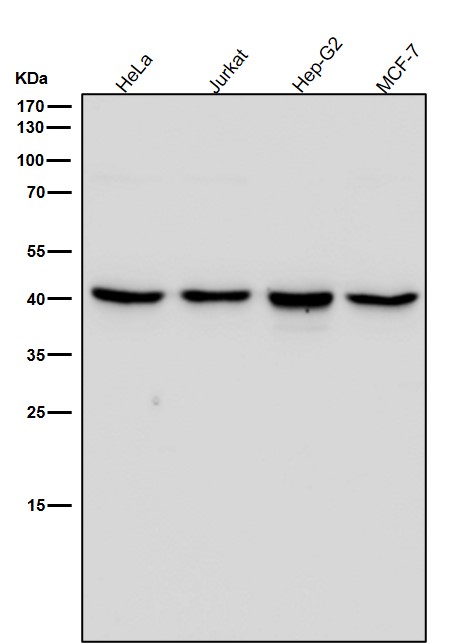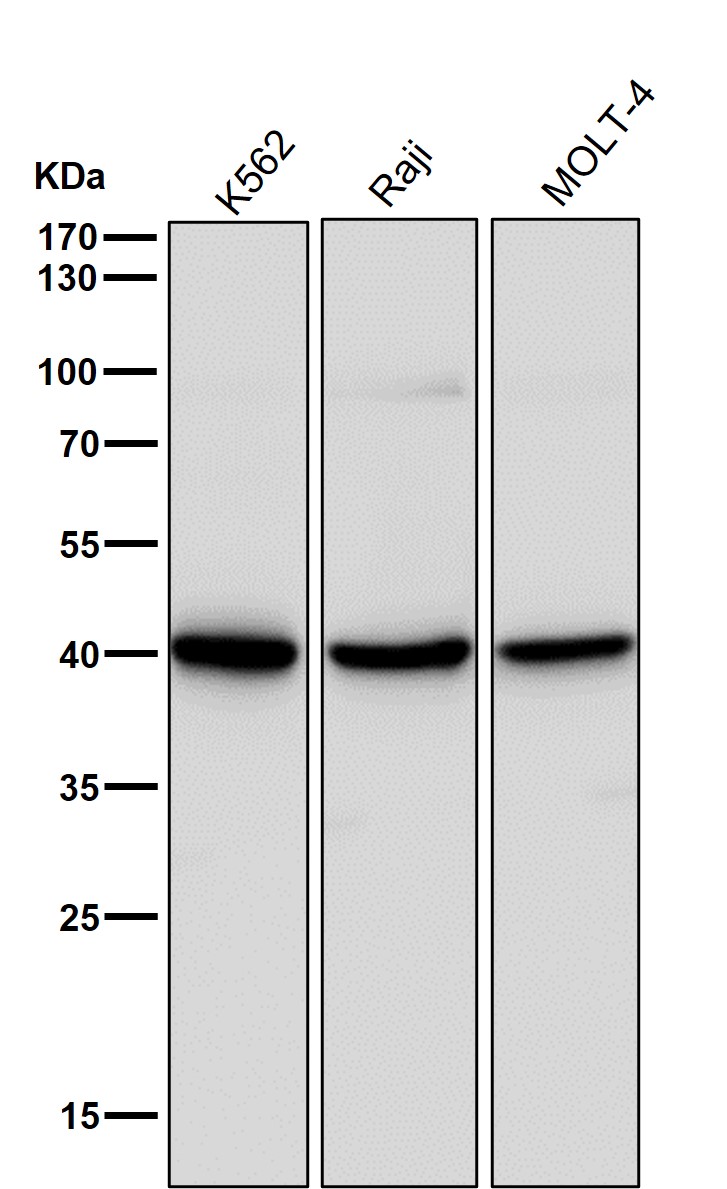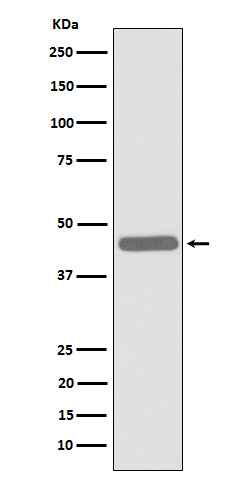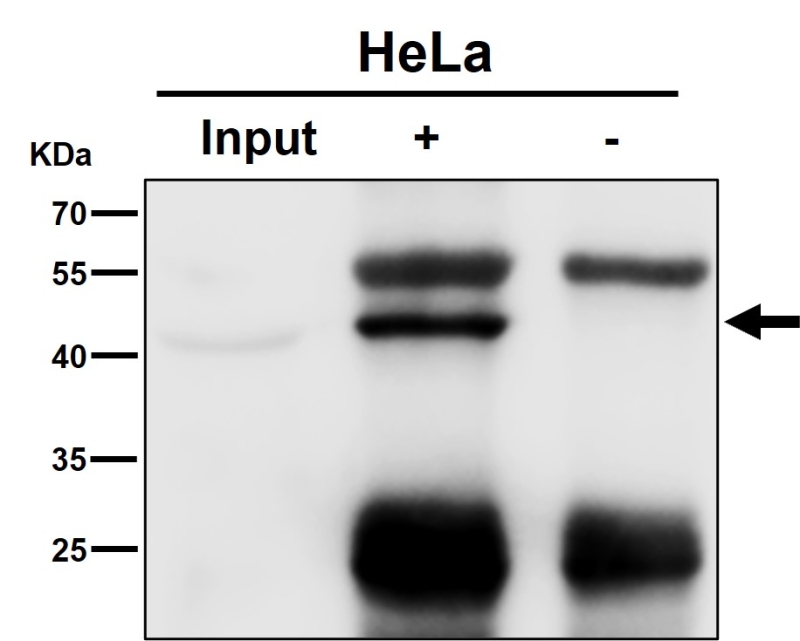



| WB | 咨询技术 | Human,Mouse,Rat |
| IF | 1/20-1/50 | Human,Mouse,Rat |
| IHC | 1/100-1/200 | Human,Mouse,Rat |
| ICC | 技术咨询 | Human,Mouse,Rat |
| FCM | 咨询技术 | Human,Mouse,Rat |
| Elisa | 咨询技术 | Human,Mouse,Rat |
| Aliases | ABH; ABH1; alkB; ALKBH; ALKBH1; hABH;;ALKBH1 |
| WB Predicted band size | Calculated MW: 44 kDa ; Observed MW: 43 kDa |
| Host/Isotype | Rabbit IgG |
| Antibody Type | Primary antibody |
| Storage | Store at 4°C short term. Aliquot and store at -20°C long term. Avoid freeze/thaw cycles. |
| Species Reactivity | Human |
| Immunogen | A synthesized peptide derived from human ALKBH1 |
| Formulation | Purified antibody in PBS with 0.05% sodium azide,0.05% BSA and 50% glycerol. |
+ +
以下是关于ALKBH1抗体的3篇代表性文献及其摘要概述:
1. **文献名称**:*Structural insights into ALKBH1: an epigenetic eraser oxidizing 5-methylcytosine in DNA*
**作者**:Yang, H. et al.
**摘要**:该研究解析了ALKBH1蛋白的晶体结构,并通过Western blot和免疫荧光实验验证其抗体特异性,揭示ALKBH1作为5-甲基胞嘧啶(5mC)氧化酶在DNA去甲基化中的作用。
2. **文献名称**:*ALKBH1 is a mitochondrial RNA N6-methyladenosine demethylase required for neural development*
**作者**:Wang, X. et al.
**摘要**:利用ALKBH1抗体进行免疫沉淀和亚细胞定位分析,发现ALKBH1通过调控线粒体RNA m6A修饰参与神经发育,敲除后导致胚胎干细胞分化异常。
3. **文献名称**:*ALKBH1-mediated tRNA demethylation regulates translation*
**作者**:Liu, F. et al.
**摘要**:通过ALKBH1抗体检测其在细胞中的表达分布,证明ALKBH1通过去除tRNA的N1-甲基腺苷(m1A)修饰影响翻译过程,揭示其表观转录组学功能。
4. **文献名称**:*ALKBH1 deficiency impairs mouse spermatogenesis by acting on mitotic cell cycle and DNA damage response*
**作者**:Wu, T. et al.
**摘要**:采用ALKBH1抗体验证基因敲除模型,发现ALKBH1通过调控DNA损伤修复和细胞周期维持精子形成,缺失导致雄性不育。
这些研究均通过ALKBH1抗体进行蛋白功能验证,涵盖其在表观遗传修饰、RNA代谢及生殖发育中的关键作用。
ALKBH1 is a member of the AlkB family of dioxygenases, which are evolutionarily conserved enzymes involved in nucleic acid repair and epigenetic regulation. Initially identified as a homolog of E. coli AlkB, ALKBH1 catalyzes the oxidative demethylation of various substrates, including methylated DNA, RNA, and histones. It plays roles in DNA damage repair, mitochondrial function, and transcriptional regulation, with implications in cancer, neurodevelopment, and stem cell biology.
ALKBH1 antibodies are essential tools for detecting and studying the protein's expression, localization, and function in biological systems. These antibodies are typically developed in hosts like rabbits or mice, using immunogenic peptide sequences or recombinant protein fragments. Validated through techniques like Western blotting, immunohistochemistry (IHC), and immunofluorescence (IF), they help identify ALKBH1 in tissues, cell lines, or animal models. Specificity is confirmed using knockout controls or siRNA-mediated knockdown.
Research applications include investigating ALKBH1's role in epigenetic modifications (e.g., demethylating 6-methyladenine in DNA/RNA), mitochondrial RNA processing, and its dysregulation in diseases like glioblastoma or neurodevelopmental disorders. Commercial ALKBH1 antibodies vary in clonality (monoclonal/polyclonal), epitope targets, and species reactivity, requiring careful selection based on experimental needs. Proper validation remains critical to avoid cross-reactivity with other AlkB family members, such as ALKBH2-8 or FTO.
×